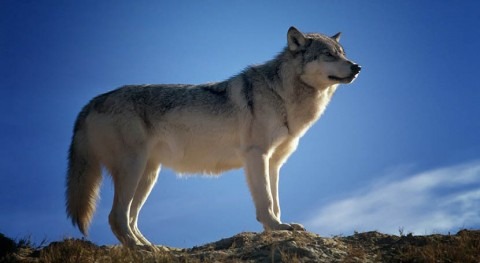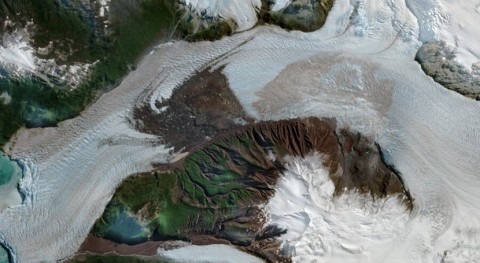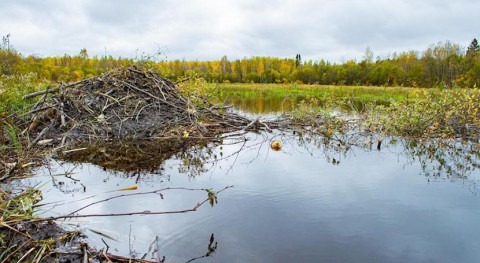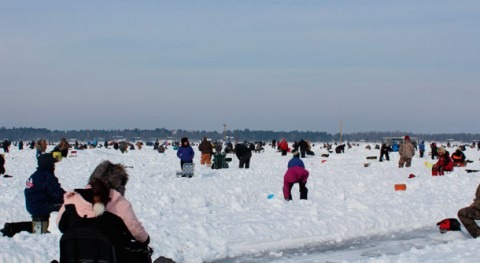Lakes across the Midwest are losing cold, oxygenated habitat as a result of climate change and nutrient pollution. This loss of critical habitat has negative consequences for water quality, fish, and the production of greenhouse gases. While data show that effectively managing watershed land use at a local scale can protect coldwater, oxygen-rich habitats and reduce nutrient pollution in Midwestern lakes, lake-specific targets for watershed management are lacking.
In a University of Minnesota study published in Ecosphere, researchers used statistical models to estimate the resilience of over 10,000 lakes in the upper Midwest to both climate change and land use in order to identify temperature and watershed conditions above which critical habitat was lost. For lakes in which watershed land use was predicted to influence coldwater habitat, the researchers identified lake-specific thresholds for protecting or restoring forested watersheds. They also estimated the uncertainty in how individual lakes would respond to both climate and land use change.
“Sometimes we can feel hopeless when thinking about the negative consequences of climate change. This research is an example of ways in which we can manage local conditions to slow down or mitigate those negative effects,” said Gretchen Hansen, Ph.D., the study’s lead researcher and an assistant professor in the U of M’s College of Food, Agricultural and Natural Resource Sciences (CFANS) Department of Fisheries, Wildlife and Conservation Biology.
The researchers found:
- Under climate conditions from 2040 to 2059, the number of lakes containing suitable coldwater habitat was predicted to decline by 67 percent, while the number of lakes with unsuitable habitat was predicted to increase by over 200 percent.
- Changing watershed land use was predicted to influence the existence of suitable coldwater, oxygenated habitat in 24 percent of lakes. These are high priority lakes in terms of protection or restoration of forested watersheds.
- Lakes varied in the amount of temperature increase they could sustain without affecting their resistance to climate-influenced habitat change. Median climate resistance was 4.3 degrees Celsius, with some lakes capable of maintaining coldwater habitats even with temperature increases up to 14 degrees Celsius.
This research builds on decades of work by the Minnesota DNR and its partner agencies, which has resulted in the protection of forested watersheds for critical climate refuge lakes in the state. Currently, the state of Minnesota uses a threshold of 75 percent protection of forested watersheds to protect water quality in general, which also protects the resilience of coldwater habitat in those lakes. This research identifies more variable lake specific protection targets that could potentially inform future conservation efforts of coldwater habitat explicitly.
“Our research identifies variability in the levels of watershed protection required to maintain coldwater habitat,” said Hansen. “Some lakes need more protection, some may get by with less. This work also extends the approach to lakes outside of Minnesota to enable a regional coordination of habitat management in the face of climate change.”
Additionally, resource management agencies from other Midwestern states are interested in implementing programs similar to Minnesota’s based on the results of this research.
“The Michigan DNR is developing a plan to improve water quality and reduce declines of cisco fish populations in the state’s inland lakes,” said Joe Nohner, Midwest Glacial Lakes Partnership coordinator and biologist with the Michigan Department of Natural Resources. “Results from this study will help us prioritize and determine which lakes provide the greatest response from conservation efforts.”
These efforts include potential changes to state forest management, implementation of grants to plant trees at a large scale on public and private land, and collaboration with land conservancy and conservation partners.
According to Hansen, their landscape model research can help prioritize conservation at multiple scales.
“We’re hopeful that our results will help local and regional groups identify management targets for protecting critical habitat in vulnerable lakes. While there is uncertainty associated with such models — as individual lakes vary in their responses due to water residence time, food web dynamics, fisheries management and other factors — more detailed information on lake-specific responses and characteristics can help inform why an individual lake may respond differently than predicted,” she said. “What we’ve learned will help us tailor appropriate management actions on the individual lake scale, and despite current limitations, we believe that our landscape level approach is a critical step towards conserving freshwater resources in Midwestern lakes using the best available science.”
This study was funded by the United States Fish and Wildlife Service and through the Midwest Glacial Lakes Partnership.
Learn more about preserving coldwater habitat from Professor Hansen in this short video.












